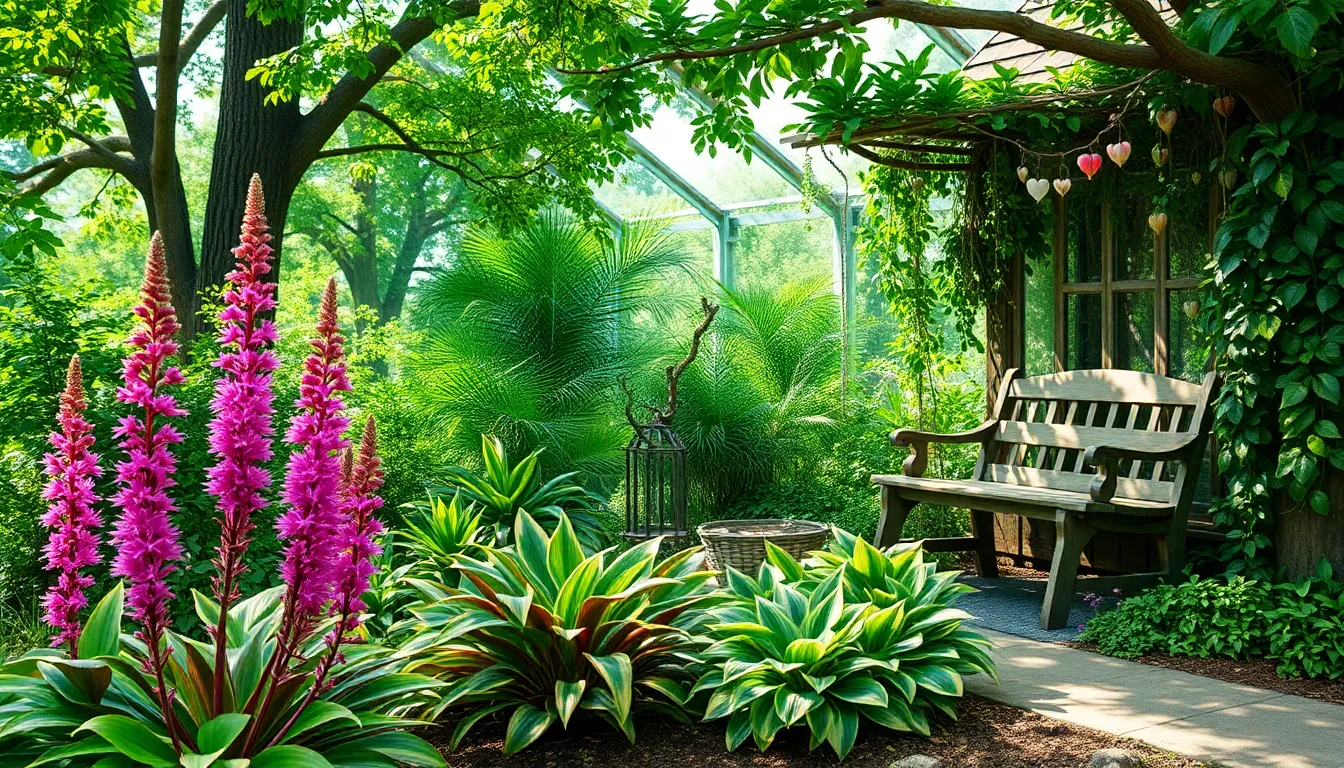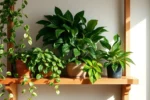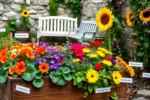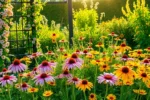Gardening enthusiasts, whether you’re just starting out or have a seasoned green thumb, know that not every corner of your garden is bathed in sunlight. Shaded areas can often feel like a challenge, but they are actually a golden opportunity to explore a variety of stunning plants that not only survive but thrive in lower light conditions. Embracing the beauty of shade-loving plants can transform these often overlooked spaces into lush, serene retreats. By the end of this article, you’ll be equipped with the knowledge to select and care for plants that will bring vitality and elegance to any shaded nook.
In our exploration, we’ll delve into a diverse array of plants that can turn your shaded corners into focal points of charm and interest. From the soft, delicate fronds of ferns to the vibrant hues of impatiens, each plant offers its unique flair and benefits. You’ll discover practical tips on choosing the right plants for your specific shade conditions, whether it’s dappled, partial, or full shade. We’ll also share insights into how to maintain these plants to ensure they flourish throughout the seasons.
Additionally, this guide will provide actionable advice on soil preparation, watering, and companion planting to maximize your garden’s potential. You’ll learn how to create a harmonious balance that will make your shaded areas as vibrant and inviting as the rest of your garden. With a few thoughtful choices, you can turn any shady spot into a sanctuary of tranquility and beauty. Let’s embark on this exciting journey to unlock the hidden potential of your garden’s shaded spaces.
Understanding Shade Garden Basics
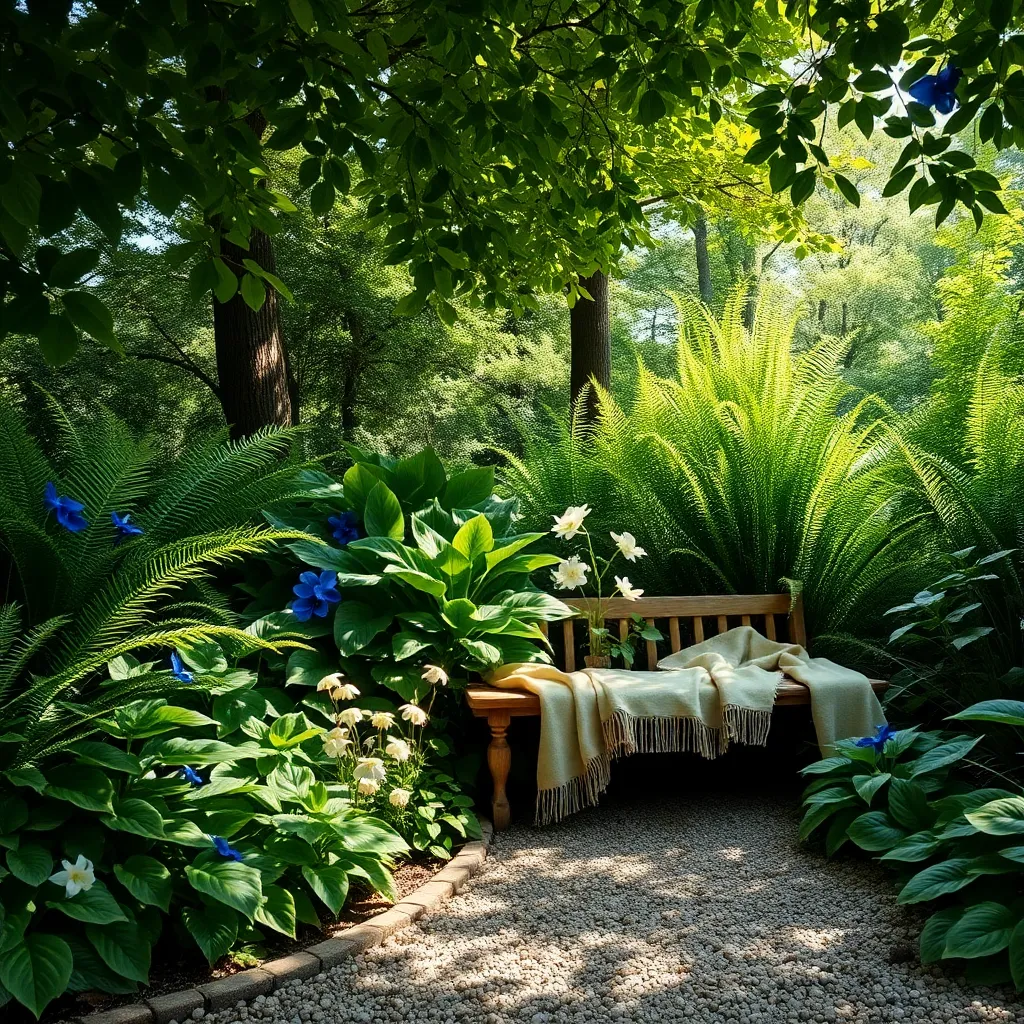
Understanding the basics of shade gardening is essential to successfully growing plants in less sunny areas. Shade gardens can be lush and vibrant if you choose the right plants and understand their specific needs.
First, identify the type of shade your garden has, as this will influence plant selection. Full shade areas receive less than three hours of direct sunlight, while partial shade receives three to six hours.
It’s crucial to select plants that naturally thrive in low-light conditions, such as ferns, hostas, and astilbe. These plants not only tolerate shade but can also add texture and interest with their varied foliage and blooms.
Soil quality is another important consideration for shade-loving plants. Amend your soil with organic matter like compost or well-rotted manure to improve drainage and nutrient content, which is vital in shaded areas where soil can be compacted and poor.
Watering frequency should be adjusted according to the specific needs of your shade garden. Most shade plants prefer moist but well-drained soil, so aim to water deeply once or twice a week, depending on rainfall and the specific plant requirements.
For more advanced gardeners, consider experimenting with layering different shade-tolerant species to create depth and interest. Combine groundcovers, understory shrubs, and taller canopy plants to mimic natural woodland environments and enhance the visual appeal of your shade garden.
Top Shade-Loving Perennials

When it comes to shade-loving perennials, hostas are a fantastic choice due to their robust foliage and minimal maintenance needs. For best results, plant them in well-drained, rich soil and ensure they receive consistent moisture to thrive.
Another excellent option is astilbe, known for its feathery plumes that bring vibrant color to shaded spots. To keep astilbe healthy, plant them in soil that retains moisture well, and provide a layer of mulch to help conserve water.
For those seeking a low-maintenance ground cover, consider planting lamium, which offers attractive foliage and small blooms. Lamium thrives in partial to full shade and benefits from a soil enriched with organic matter, such as compost.
Ferns are also a classic choice for shaded gardens, adding texture and elegance with their delicate fronds. Ensure ferns are planted in consistently moist, slightly acidic soil, and consider adding leaf mold or well-rotted manure to enhance their growth.
Vibrant Foliage for Dim Spaces
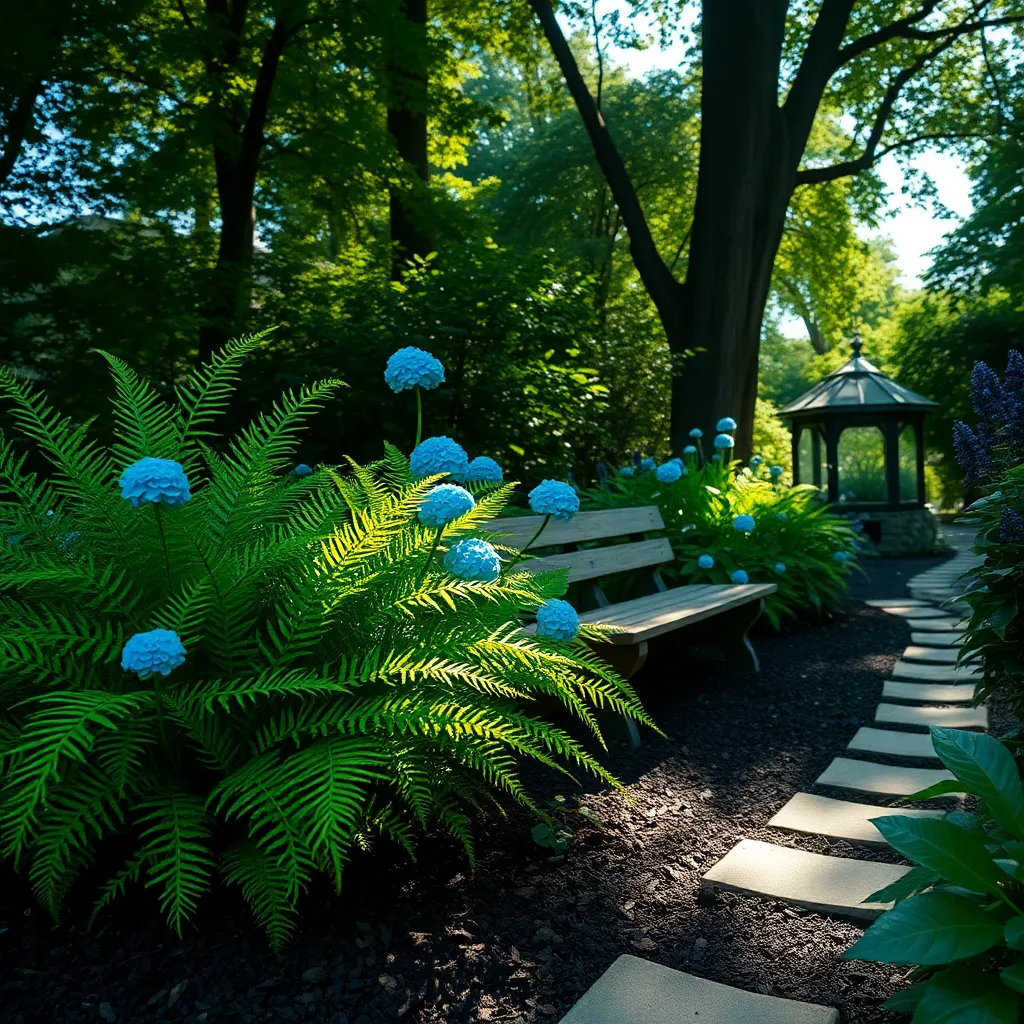
When designing a garden for dim spaces, selecting plants with vibrant foliage is key. Ferns are perfect for shaded areas, offering a lush green backdrop with minimal effort. They thrive in rich, well-draining soil and require regular watering to keep their fronds lush. To maintain their health, ensure the soil stays consistently moist but not soggy.
For a splash of color, consider adding Heuchera, commonly known as coral bells. These plants are known for their striking foliage, ranging from deep purples to bright lime greens. They prefer slightly acidic, well-drained soil and benefit from a layer of mulch to retain moisture. Plant them in groups for a dramatic effect in your shaded garden space.
Hostas are another excellent choice for adding texture and vibrancy to your shaded garden. These plants are easy to care for and come in a variety of sizes and leaf patterns. To keep hostas healthy, plant them in fertile, well-drained soil and water them regularly, especially during dry spells. Dividing hostas every few years can help maintain their vigor and prevent overcrowding.
If you’re looking for something unique, try planting Lungwort, which boasts beautifully speckled leaves. This plant thrives in partial to full shade and prefers cool, moist conditions. Lungworts are low maintenance, but ensuring good air circulation around the plant can help prevent powdery mildew. Adding compost to the soil will provide the nutrients they need for lush growth.
Blooming Beauties for Low Light
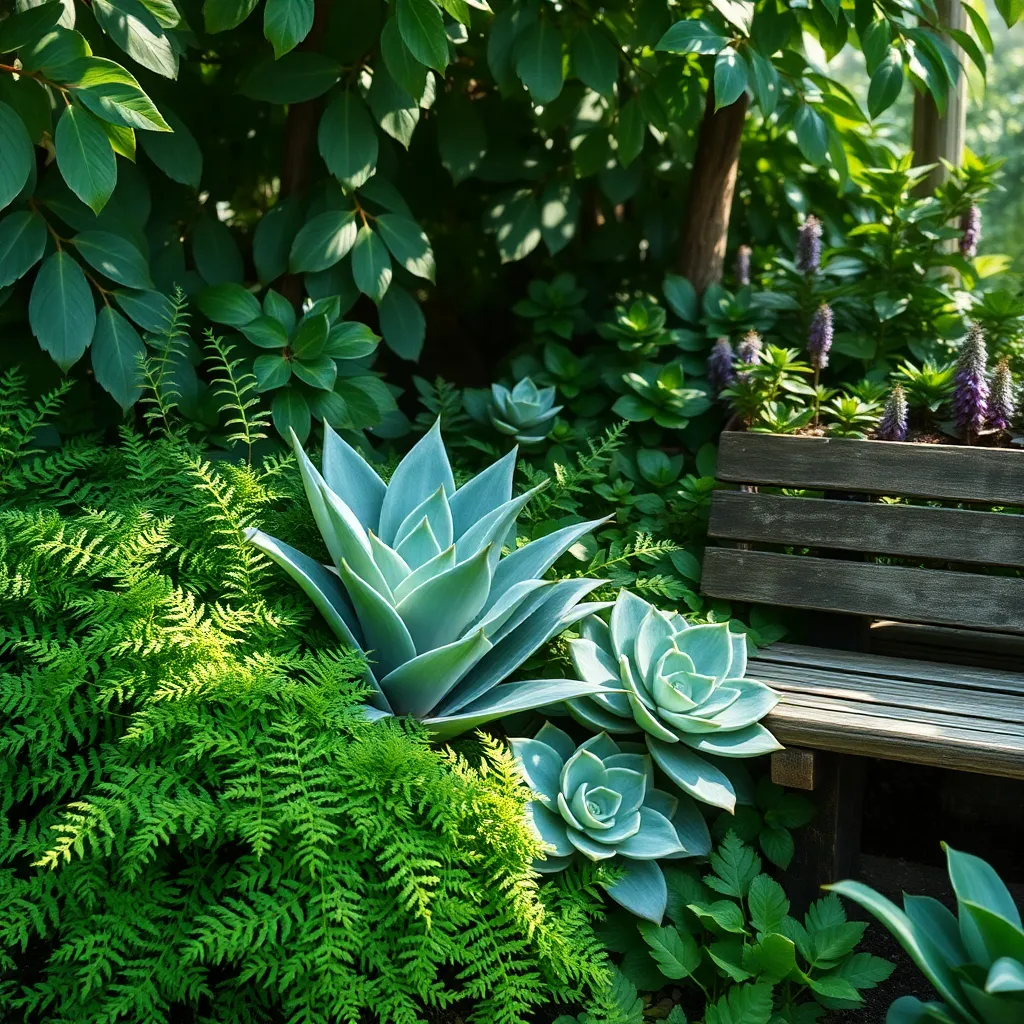
When it comes to adding color to shaded areas, few plants are as rewarding as the fuchsia. With its vibrant, dangling blooms, fuchsia thrives in areas with indirect sunlight, making it a perfect choice for patios or under larger trees. To keep your fuchsia in bloom, ensure that the soil is well-draining and consistently moist, but not waterlogged. Fertilize every two weeks with a balanced liquid fertilizer to encourage continuous flowering.
Another excellent choice for low-light conditions is the impatiens, known for their wide array of colorful flowers. These plants require rich, well-draining soil and benefit from regular watering to maintain their lush appearance. For best results, mulch around the base to retain moisture and provide a steady supply of nutrients. Deadheading spent blooms will also encourage new growth and more vibrant displays.
Astilbes are another shade-loving beauty, offering feathery plumes of flowers that add texture and color to dim garden spots. Plant them in a location with consistently moist, humus-rich soil for optimal growth. To boost their performance, apply a slow-release granular fertilizer in early spring. In warmer climates, consider adding a layer of mulch to keep the roots cool and moist.
Begonias are versatile plants that thrive in low-light environments, offering a dazzling array of flower colors and leaf shapes. They prefer slightly acidic, well-draining soil and should be watered regularly, allowing the top inch of soil to dry out between waterings. For gardeners seeking a challenge, try propagating begonias from leaf cuttings to expand your collection effortlessly. With a little care, these bloomers will brighten even the shadiest corners of your garden.
Maintaining Shade Garden Health
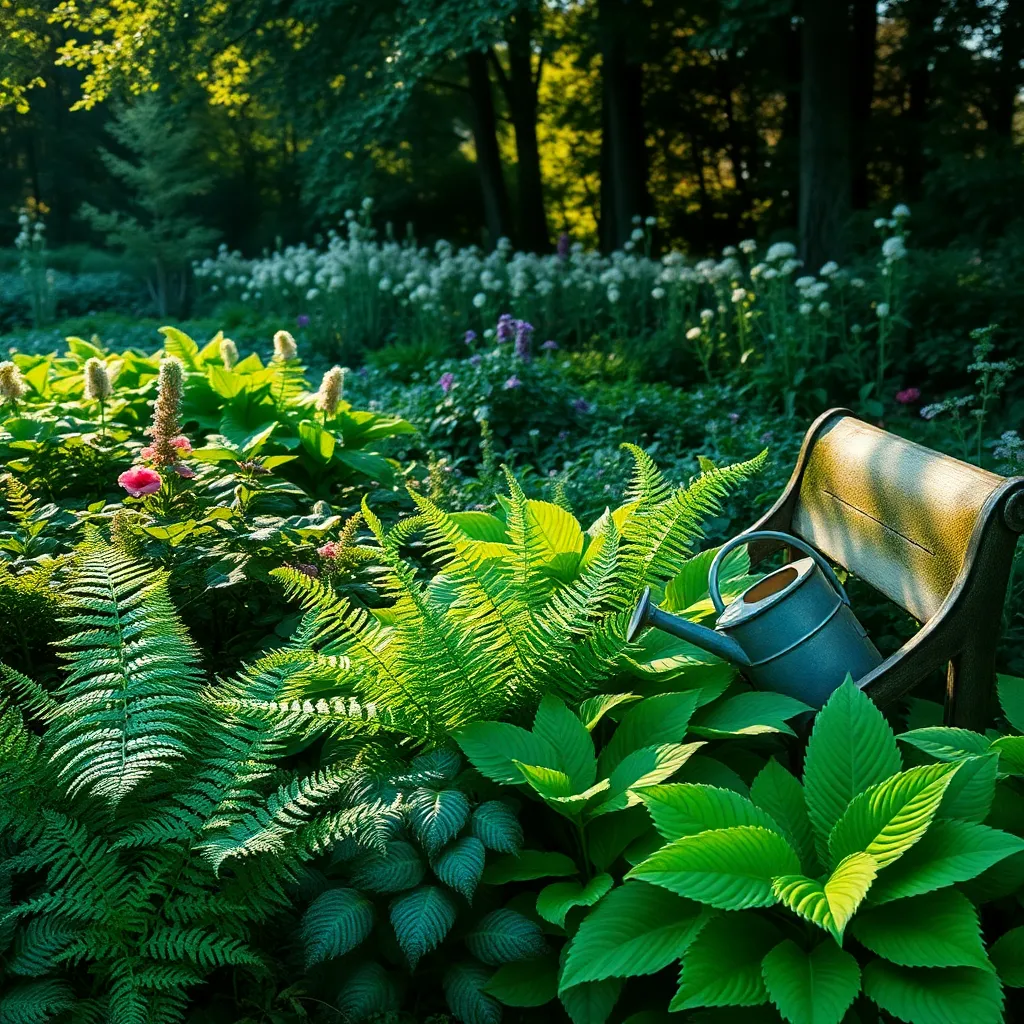
Ensuring the health of your shade garden starts with understanding its unique environment. Unlike sunny gardens, shaded areas benefit from a mix of indirect light and cooler temperatures, which can affect plant growth and maintenance needs.
To keep your shade garden thriving, begin by selecting the right soil. Loamy soil enriched with organic matter is ideal as it retains moisture while allowing for adequate drainage, which is crucial in shaded conditions.
Regular watering is essential, but be cautious about overwatering, as too much moisture can lead to root rot. Water deeply once a week, allowing the soil to dry slightly between waterings to maintain optimal plant health.
Pruning is another important aspect of maintaining shade garden health. Remove dead or diseased foliage to encourage air circulation and prevent the spread of plant diseases, which can be more prevalent in damp, shady environments.
For advanced gardeners, consider using mulch to regulate soil temperature and retain moisture. A 2-inch layer of organic mulch can suppress weeds and enhance soil fertility, making it a valuable tool for maintaining a healthy shade garden.
Fertilization should be approached with care, as shaded plants often require less than their sun-loving counterparts. Use a balanced, slow-release fertilizer sparingly in the early spring to give plants a gentle nutrient boost.
Conclusion: Growing Success with These Plants
In exploring the captivating world of shaded-area plants, we’ve uncovered five key relationship concepts: the importance of nurturing growth in unlikely settings, the beauty of patience and persistence, the art of adapting to unique environments, the value of diversity in partnerships, and the transformative power of a well-tended bond. These insights not only apply to gardening but also offer profound lessons for cultivating thriving relationships.
As your next step, consider creating a “relationship garden” by identifying areas in your life that might need a little more attention and care. Whether it’s spending quality time with your partner or learning to listen more effectively, small changes can lead to vibrant growth.
Don’t forget to save or bookmark this article as a handy guide for both your gardening and relationship endeavors. With these insights at your fingertips, you’re well-equipped to nurture a flourishing personal life.
Remember, just as shaded plants can thrive with the right care, so too can your relationships blossom. By applying these principles, you’re investing in a future of lasting, thriving connections. Your journey towards relationship success begins today—nurture it and watch it grow.

